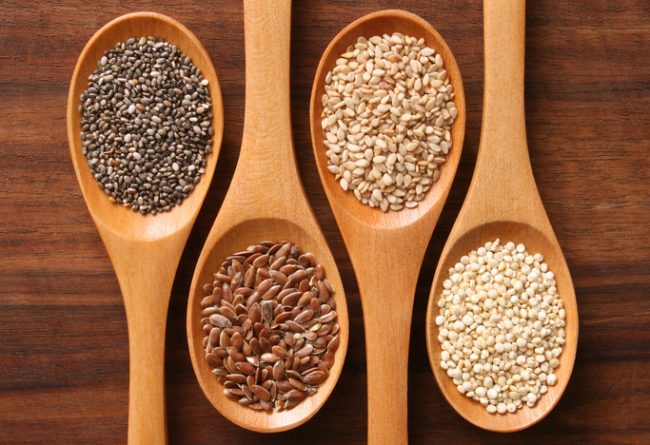Most people who adopt a healthy lifestyle know that good digestion is a key factor in the body’s absorption of nutrients. It may seem like a contradiction, but one of the best things we can do to help ensure efficient digestion is by eating fiber, which is dietary material that resists being broken down by enzymes in the intestines.
You heard that right. High-fiber foods — often referred to as “dietary fiber” or “roughage” — aren’t supposed to be digested. Instead, they alter the food contents being worked on in the intestinal tract which, in turn, affects how those foods’ nutrients may be absorbed.
When the fiber that’s ingested is soluble, the fiber absorbs water and becomes a gelatinous mass, which then gets worked on by bacteria. Soluble fibers often slow down food’s movement through the system. On the other hand, insoluble fiber doesn’t dissolve in water. Instead, it keeps absorbing water as it moves through the digestive system, and bulks up the contents, which typically allows for greater ease of elimination.
In other words, depending on your needs– if you’re unsure, it’s always best to speak with your physician or healthcare provider, as sometimes a high-fiber diet may lead to a build-up of intestinal gas and bloating–there’s a vast array of fiber products available.
Here’s a sampling:
1. White chia seeds
For people who are new to the chia-seed trend, white chia seeds, because of their milder flavor (which makes for easier blending in recipes), are a good starting point. For moms with children who are picky eaters, white seeds are more easily camouflaged sprinkled atop foods.
However, both black and white chia seeds (Salvia hispanica) possess the same ancestry. This food, which comes from a mint-related plant and whose name means “strength,” is native to Mexico and Guatemala. Containing protein, calcium, iron, phosphorous and magnesium, chia was a staple in the diets of the ancient Mayans, Incans and Aztecs.
In recipes, these tiny seeds can be sprinkled on dishes for a crunchy texture, stirred into beverages or added to baking batter. Some cooks even use them, in a gelatinous state, as egg replacers.
2. Psyllium husk powder
Derived from the seed coverings of the Plantago ovata plant, psyllium husk powder –a soluble fiber–promotes normal bowel movements and proper elimination of stools.* An added bonus is that, when added to a diet low in saturated fat and cholesterol, psyllium can help promote healthy cholesterol levels.* It can also support the maintenance of healthy blood sugar levels within the normal range.* This fiber can easily be mixed into beverages.
3. Acacia powder
Acacia powder, harvested from the sap or gum of the Acacia senegal tree, is a flavorless, soluble fiber product whose fine powder mixes easily into water or other beverages. It’s a favorite of many people with digestive sensitivities.
4. Hemp protein
In addition to being a nutritiously dense food that contains good protein and essential fatty acids, hemp protein is also high in fiber and can be easily used as a hemp drink mix. Mixing it into a beverage provides a dual protein-fiber boost.
Do you have a fun way of sneaking fiber into your diet? Share it with us in the comments below.
*These statements have not been evaluated by the Food and Drug Administration. This product is not intended to diagnose, treat, cure or prevent any disease.

